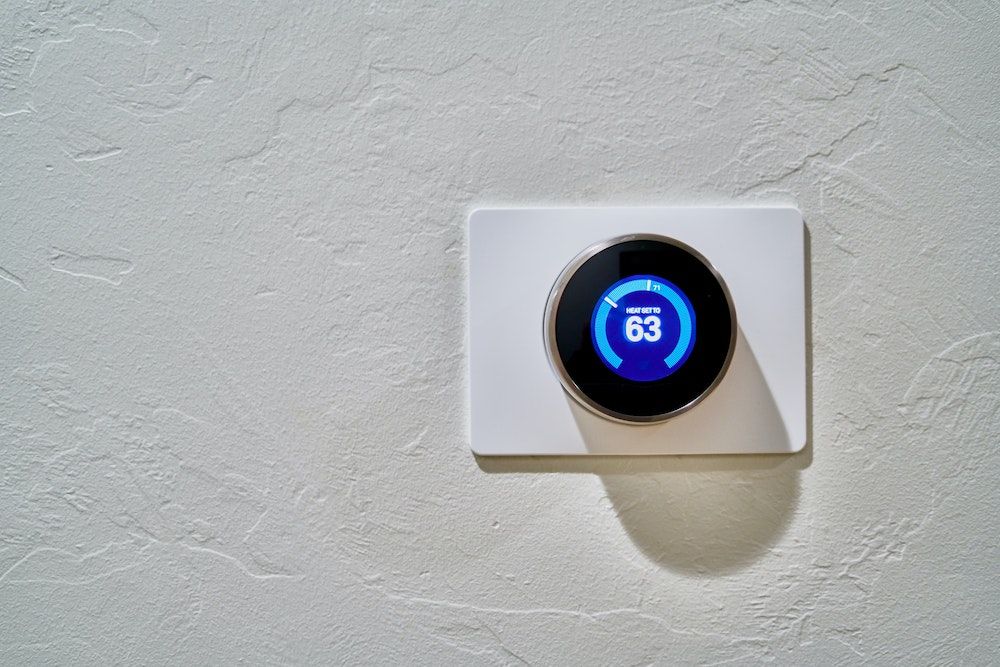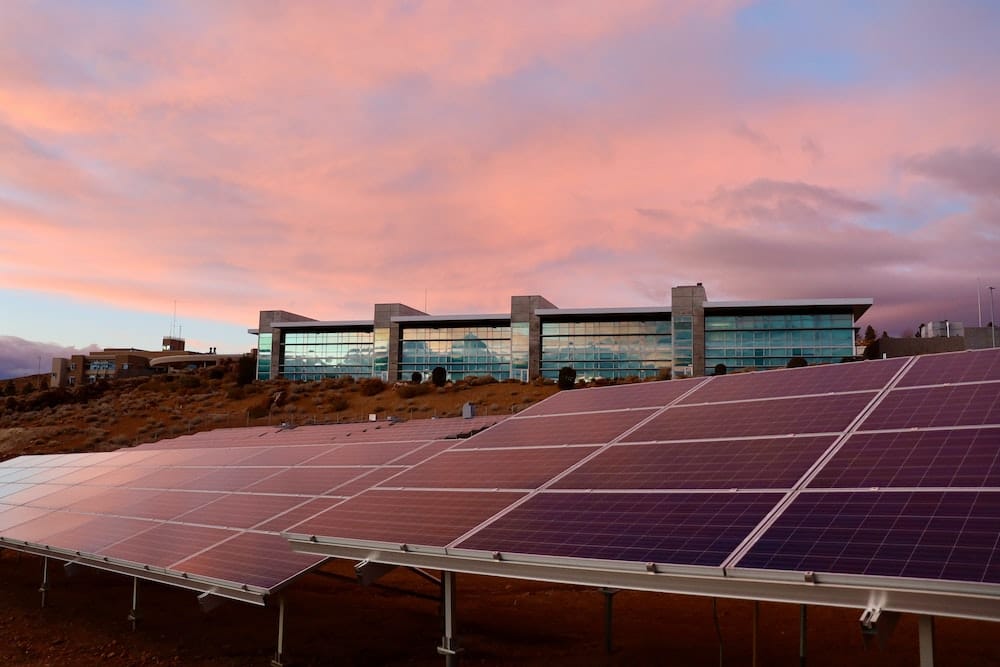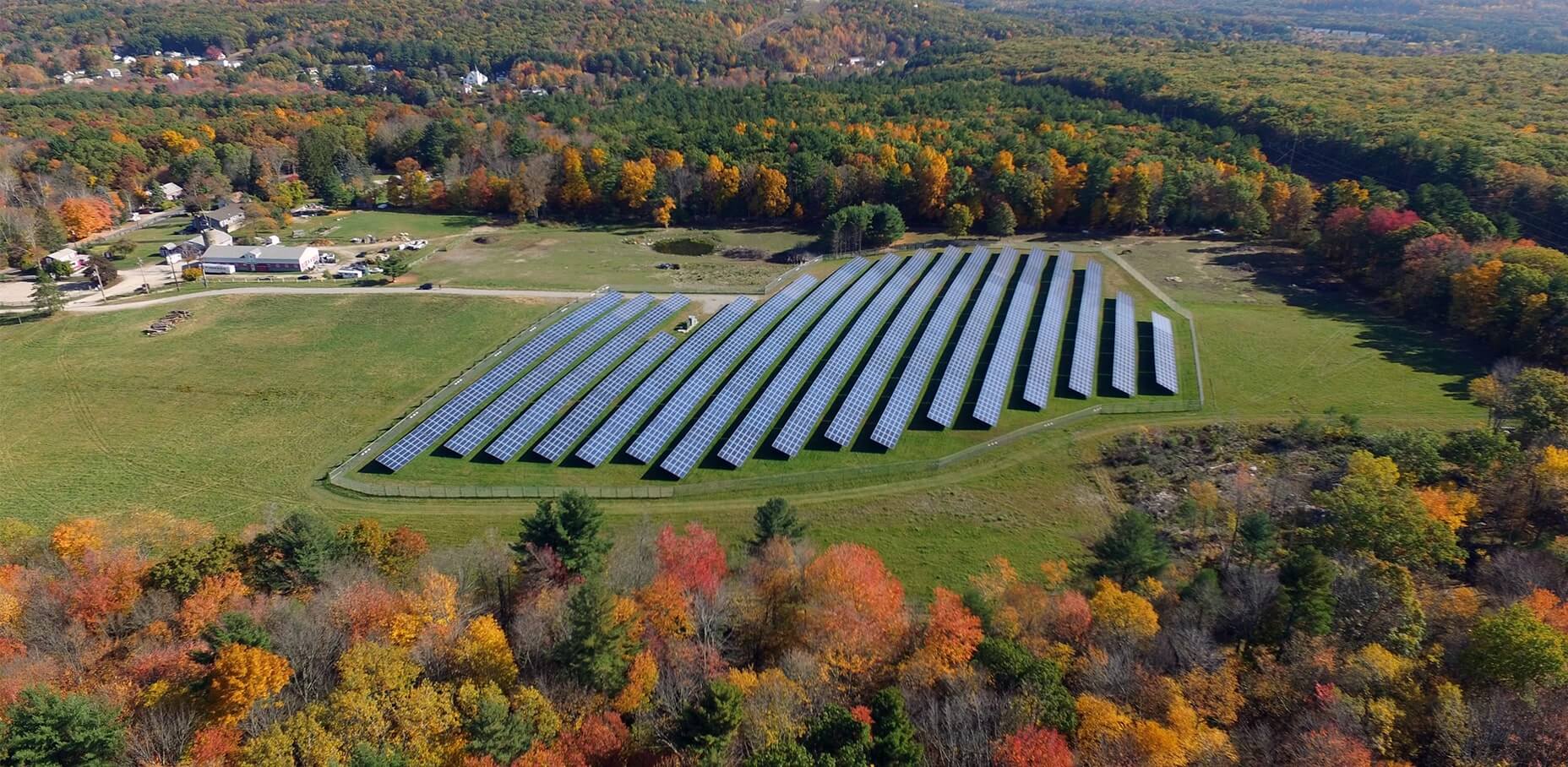Building Decarbonization: Why Net-Zero Carbon Buildings Are the Next Big Thing In Cities
Building decarbonization refers to programs, activities and practices designed to reduce carbon and other greenhouse gas emissions from buildings. Homes and apartment complexes, offices and stores, government buildings and institutions—you name it. Some U.S. cities have already started putting decarbonization strategies in place to help achieve net-zero emissions.

Topics covered
No matter how energy-conscious you are, everyone creates some amount of carbon emissions each day: Cooking with a gas stove, living or working in a home or building that uses gas heating.
Even if you’re in buildings with all-electrical equipment and appliances, carbon could still be spewing skyward if the electricity to the building is powered by fossil fuels. And as of 2020, 79% of U.S. energy consumption still comes from fossil fuel sources. Yikes! But we’re currently amid an unprecedented investment in shifting our country away from fossil fuels and into renewables.
OK, you say. I’m only one person. How big a deal can that be? Well, if you add up all the people doing the same thing in the 70 million homes and businesses throughout the nation, it turns into a pretty big deal indeed.
While you may think all this carbon generation is totally beyond your control, that’s not wholly true. You can take steps to mitigate carbon emissions from your own home. And you can support initiatives and leaders that strive for larger-scale building decarbonization in the commercial and industrial sectors too—not just residential.
What is building decarbonization?
Building decarbonization refers to programs, activities and practices designed to reduce carbon and other greenhouse gas emissions from buildings. The overall goal with decarbonization is to get buildings as close to net-zero carbon emissions as possible. We’re talking about homes and apartment complexes, offices and stores, government buildings and institutions—you name it.
And no, it doesn’t simply involve razing all existing structures and starting over from scratch. There are ways to retrofit existing buildings and homes to make them less carbon intensive and more environmentally happy, which would be the first step in this process to cut the carb(on)s.
In simple terms, the two key steps are:
- Address and reduce operational carbon emissions
- Address and reduce embodied carbon emissions
Carbon regularly emitted from homes and buildings as people go about their daily lives is known as “operational carbon.”
The second step is to reduce what is known as “embodied carbon,” or the carbon emissions produced during the manufacturing, transportation and installation of building materials.
Embodied carbon is typically at its highest while a structure is being built, but it also applies to carbon emissions from transportation, materials and installation throughout the building’s entire lifecycle.
Regular building maintenance can add to the embodied carbon footprint, as can the demolition, waste and recycling hauls associated with a structure’s removal. This is another reason why razing all existing structures and starting from scratch is not the way to go. Besides, where would you live and work while you were waiting for your newly built decarbonized home and workplace?
The three main decarbonization strategies
While you may readily agree that focusing on existing structures is a solid first step, it can be a little tougher to figure out where to begin. Is decarbonization one of those highfalutin concepts that sounds good on paper but fails miserably in real life?
Thankfully not. And putting it into action is easier than you would think, especially if you systematically apply the three main decarbonization strategies. They are:
- Optimize
- Electrify
- Decarbonize

Optimize
Have you ever shoved a rolled-up towel under a door that was leaking in cold air? Or maybe you've made the switch to a smart thermostart to automate your indoor temperature schedule? Then you’re already familiar with optimizing your energy use, or using the least amount of energy to achieve the results you want.
Optimizing your energy use can come from any number of large or small changes that improve efficiency and effectiveness while reducing carbon emissions. Ideas here include:
- Fixing your doors so they don’t let air leak in or out (towels only go so far)
- Adding insulation to walls, ceilings, attic areas
- Switching to LED lightbulbs (which use 75% less energy than incandescent bulbs)
- Using sensors to turn lights on and off in rarely used areas
- Investing in a smart or programmable thermometer for efficient heating and cooling
- Going for energy-efficient appliances, or appliances that are ENERGY STAR certified

Electrify
Despite its title, the electrification step doesn’t involve anything particularly exciting like a perimeter of lightning rods or a Pikachu. It instead refers to replacing equipment and appliances that use fossil fuels with those featuring the latest electric technology. It’s like replacing your gas-powered car with an electric vehicle, though arguably less fun.
If you’ve moved from an old-school gas dryer or gas stove to an energy-efficient electric dryer or stove, you’ve already made some steps toward building electrification.

Decarbonize
Once a building is operating in the most energy-efficient manner with all-electric equipment, the third step of decarbonization comes into play. Switching to electric machinery and appliances is good, but electricity can still come from coal or other fossil fuels.
The third step of decarbonization involves using electricity that comes from renewable energy options, such as solar power. The most effective renewable energy options are sustainable and produce zero greenhouse gas emissions.
Solar is a prime example across the board, with wind energy taking a close second (although installing solar panels is much more feasible than trying to get clearance to erect and maintain a giant wind turbine in your backyard or in a company’s parking lot).
For the best results, you want to combine all three strategies: optimize, electrify, decarbonize. The steps work together to create and support the most effective and efficient zero-carbon operational system—but only if you go in order.
If you decide to go for electric over gas heat—but your leaky doors let all the heat escape—you’re still wasting precious energy, along with the resources that create that energy. Optimize first. Then electrify. Then decarbonize.
How do you decarbonize buildings?
If you’re talking about decarbonizing large-scale commercial or industrial buildings instead of, say, an individual house, you’d still use the three main strategies—but at an amplified level. You’d want to start with making everything as energy efficient as possible, followed by a switch to electric equipment, and then the final switch to renewable energy to create the electricity.
Because buildings operate on a larger scale, they may be able to more readily embrace on-site energy generation options, such as solar panels and solar water heaters. Some universities or hospitals for example have buildings with large enough roofs to install solar panels.
Embodied carbon tends to be a bigger deal with buildings than houses, and that could be reduced as well. Here you would want to carefully consider the type of fuel and materials used when making repairs and erecting new buildings. Leadership in Energy and Environmental Design (LEED) is a green building certification program that offers guidance on what kind of building materials to use to have a lower carbon footprint.
Concrete is a significant component in buildings; it’s what holds buildings together. But it’s also one of the largest emitters of carbon accounting for 5% of global emissions. Concrete is made from limestone, mixed with reinforcing materials and heated—almost always with fossil fuels—at over 1400 degrees Celsius. From its extraction to its refinement, it packs on the carbon. But there are new methods being developed to help reduce the total carbon load, like recycling old concrete, plastic, and other industrial byproducts to make the process more carbon efficient.

What are the benefits of decarbonization?
The overarching benefit of decarbonization is reducing the amount of pollution that’s fouling up the environment. But that’s not the only good thing that comes out of it.
Improvements in human health
Pollution from fossil fuels not only fouls up the environment. It can likewise foul up our health. Gas appliances that burn fossil fuels directly in our homes emit carbon dioxide, carbon monoxide, nitrogen oxide and other not-so-great things you don’t really want floating around your living or working area.
These pollutants have been linked to to respiratory issues that include asthma, bronchitis and emphysema.
Switching to electric appliances powered by renewable energy sources brings a breath of fresh air to the household. Literally.
Shifting away from fossil fuel consumption toward renewable energy production
Not only do fossil fuels create loads of carbon emissions and other pollution, but they’re not going to last forever. Then what? Sure, the air would be extremely clean if there are no more fossil fuels to burn. But what’s going to power our electricity and machinery that runs on fossil fuels?
Shifting to renewable energy production takes care of both problems with a single solution. Solar power, wind energy and other cool renewable energy sources like tidal and hydropower are much better for the environment. And we’re also guaranteed a perpetual supply. As long as the sun keeps shining, the wind keeps blowing, and water keeps flowing, we’ll be able to harness all the energy we need.
Significantly easier to control, measure, and forecast energy consumption
When you have a combination of gas and electricity powered by fossil fuels, it can be tough to monitor and control how much energy is actually being used—or wasted. If you’re using a combo of gas and electricity and wanted to measure your own home energy use, for example, you’d need to track all your individual meter readings and then kind of guess at how much energy you’re using. And that still wouldn’t take into account the fossil fuels consumed to create your electricity.
Changing your energy use to solar-powered electricity makes measuring energy consumption a heck of a lot easier. One of the savviest gadgets currently on the market lets you simply attach several modules to circuits in your breaker box to begin real-time monitoring of your electricity use.
Automated energy monitoring can be equally straightforward on a larger scale. This could help forecast future energy use to ensure adequate power is being produced. It could also help conserve energy by introducing programs that offer incentives for using electricity at off-peak hours or otherwise controlling how much energy can be consumed at any given time. Managing electricity loads can reduce the impact on the energy grid and reduce carbon emissions even more.
Why cities are following the decarbonization trend in the United States
With so many benefits of decarbonization, it’s no surprise that several U.S. cities are hopping on the bandwagon. Two that made headlines for their decarbonization plans are Ithaca, New York, and Denver, Colorado.
Ithaca, New York

The City of Ithaca aims to become the first U.S. city to become 100% decarbonized, with a plan to decarbonize all of its buildings by 2030. Officially known as the Efficiency Retrofitting and Thermal Load Electrification Program, the plan is starting with the electrification of residential and commercial buildings.
A total of 6,000 residential and commercial buildings are slated to be revamped with electric appliances, heating and cooling systems. The first phase of the electrification plan tackles 1,600 buildings, 1,000 of which are residential and 600 of which are commercial. Private funding of $100 million was raised to cover the first phase of electrification.
Denver, Colorado

The City and County of Denver are also getting into the decarbonization swing. Their goal is to reduce greenhouse gas emissions by 80% by 2050. One of the plans that contribute to that goal is to achieve net zero energy in new homes and buildings by 2030.
Officially known as the Net Zero Energy New Buildings & Homes Implementation Plan, the plan defines net zero energy buildings as those that are:
- Highly energy-efficient
- Outfitted with all-electric equipment and appliances
- Powered by on-site and/or off-site renewable energy sources
- Providers of demand flexibility for the grid
The fourth section of the definition says that new homes and buildings will be providers of demand flexibility for the grid. This means they will be able to store electricity as well as integrate and respond to grid signals.
In other words, if the electricity consumption of the city is overloaded, the building systems will respond accordingly by regulating their energy consumption as required.
Denver’s NZE Plan would unfold in phases, applying to new construction or buildings that undergo extensive renovations under the new codes. The three phases for net zero energy are:
- All-electric new homes in the 2024 Building Code
- All-electric new buildings in the 2027 Building Code
- All new buildings verified to be performing as they were designed in the 2030 Building Code
Unlike the plan in Ithaca where the city is initially focusing on retrofitting existing buildings, Denver’s NZE Plan focuses on new construction. While Ithaca is relying on private funding, Denver will be relying on incentives and codes designed to prompt construction companies to comply with the NZE requirements.
What states will benefit most from building decarbonization regulations?
Areas that would benefit most from decarbonization are those with buildings that generate the greatest amount of greenhouse gases. These are typically in the most highly populated areas, as well as regions where fuel oil is a common heating source. The 10 states with the highest GHG building emissions are:
- New York
- California
- Illinois
- Michigan
- Pennsylvania
- Ohio
- New Jersey
- Texas
- Massachusetts
- Minnesota
These 10 states are responsible for 56% of direct building emissions across the entire country. Focusing on them first would bring a fast dip to overall emissions nationwide.
Even if entire cities don’t yet have long-term plans for moving forward, individual decarbonization projects can still contribute to a healthier environment. A prime example is La Paz Place apartments in Chicago, where the nonprofit organization Elevate has been working in conjunction with the affordable housing provider of Bickerdike Redevelopment Corporation to upgrade the apartment buildings.
They’re following the three-step plan:
- Energy efficiency upgrades were installed in 2018. These included insulation, LED lighting, and air sealing.
- Full electrification of each household began in 2021. This involves the installation of electric stoves, programmable thermostats, and high-efficiency electric heat pumps for space heating and cooling. Monitoring indoor air quality after the removal of gas appliances is part of this step.
- The next step is to incorporate solar throughout the complex so the buildings are using clean and renewable energy.
Committing to a decarbonized energy diet for your home or building
While building decarbonization is already taking place with promising results, the process is not without its challenges. Cost remains one of the biggest factors, at least for the time being, as transitioning from buildings powered by fossil fuels to those powered by electricity and renewable resources is a gigantic and expensive undertaking.
Individuals who have recently invested in gas furnaces and other appliances may be less than thrilled if they have to take them out of commission. And those that may not be able to readily afford a new slate of appliances and electric heat pumps could eventually get stuck with outmoded appliances and raging gas prices.
But that doesn’t necessarily have to be the case. A long-term plan that follows the three steps in order, and then incorporates a strategic transition from fossil fuels to renewable energy resources, can help successfully decarbonize buildings in the U.S. and beyond.

Individuals can also start doing their part by opting for electric appliances over gas ones in their home or apartment. You can also look into your options for switching your home’s electricity supply away from your local utility company, and instead from a provider that sources only from 100% clean sources. Additionally, maybe the easiest way to go green and help reduce overall emissions—at no extra effort or cost—is community solar. Through community solar, you're supporting a local community solar farm (pictured above) as it pumps clean energy onto the grid, helping lessen the grid's reliance on harmful fossil fuels. And the best part is: as a thanks for your support, you get rewarded with a discount on your own electricity costs in the form of "solar credits" applied directly to your monthly bill. Community solar is really a win, win.
Optimizing energy use can go beyond jamming a rolled-up towel beneath the door to stop the heat from escaping. Even what may seem like a small action can have a big impact if enough people are engaging in their own set of small actions, potentially making building decarbonization a widespread reality.
Interested in other cool ways buildings are becoming more eco-friendly? Check out our article "The Rise of Modular Homes: A Sustainable Way To Build?"





